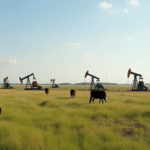Key Players and Their Stances
The best-case scenario, as formulated by the “claudistas,” predicts 20 million votes in the upcoming elections to choose new judges, magistrates, and ministers for the Judicial Power. The wildcard is the potential mobilization by the dissenting magisterial sector.
INE President Guadalupe Taddei has voiced the worst-case scenario: a boycott. This stance might come from both the Coordinadora and the “círculo rojo” (red circle), a group of influential individuals. Alfonso Cepeda Salas, the SNTE leader and senator, pledged five million votes, but resistance would prevent many partisan structures from fulfilling their commitments.
Public Opinion and Voter Intentions
A significant portion of the commentariat anticipates widespread abstention due to various factors. The Mexican version of protest voting corresponds with opinion polls projecting 20% of voters believing the judicial reform of the Fourth Transformation was unnecessary and choosing not to vote.
Nearly double that (38%) have expressed distrust in the direct election model for selecting Judicial Power members. Estimates suggest a voter turnout of 10 million, with the most loyal supporters of President Sheinbaum expecting 16 million votes, similar to the number Morena mobilized in the Revocación de Mandato (Revocation of Mandate) consultation three years ago.
Poll Consensus and Voter Confidence
Available polls largely agree: three-quarters of eligible voters believe the reform was necessary and that the upcoming elections will bring change. However, only half of them expect this change to be positive.
Corporate Mobilization and Voter Participation
The mobilization of pro-Morena corporate structures, unions, and civil associations has a ceiling of 23 million votes. Participation could reach 25% of eligible voters, including middle-class and upper-middle-class voters not aligned with the ruling party, who would also cast their ballots.
Types of Voters and Their Intentions
There are two types of voters: those susceptible to mobilization and a minority of “opinion” voters who would attend “of their own accord,” possibly to annul their votes or support candidates with recognized experience and track records.
In rare instances, campaign capabilities of the candidates are acknowledged. Only occasional “educational” spots without endorsements on electronic media mention the voting date, potentially too late for impact.
Key Questions and Answers
- What is the best-case scenario for voter turnout? According to claudistas, there could be 20 million votes in the upcoming elections.
- Who are the key players and what are their stances? INE President Guadalupe Taddei supports the worst-case scenario of a boycott, while SNTE leader Alfonso Cepeda Salas pledged five million votes for pro-Morena candidates.
- What percentage of voters believe the judicial reform is necessary? Three-quarters of eligible voters believe the reform was necessary, according to available polls.
- What is the estimated voter turnout? Estimates suggest a voter turnout of 10 million, with the most loyal supporters of President Sheinbaum expecting 16 million votes.
- What percentage of voters expect positive change from the elections? Only half of the voters believe the change will be for the better, according to polls.
- What is the potential voter participation ceiling? Corporate mobilization and civil associations have a ceiling of 23 million votes.






